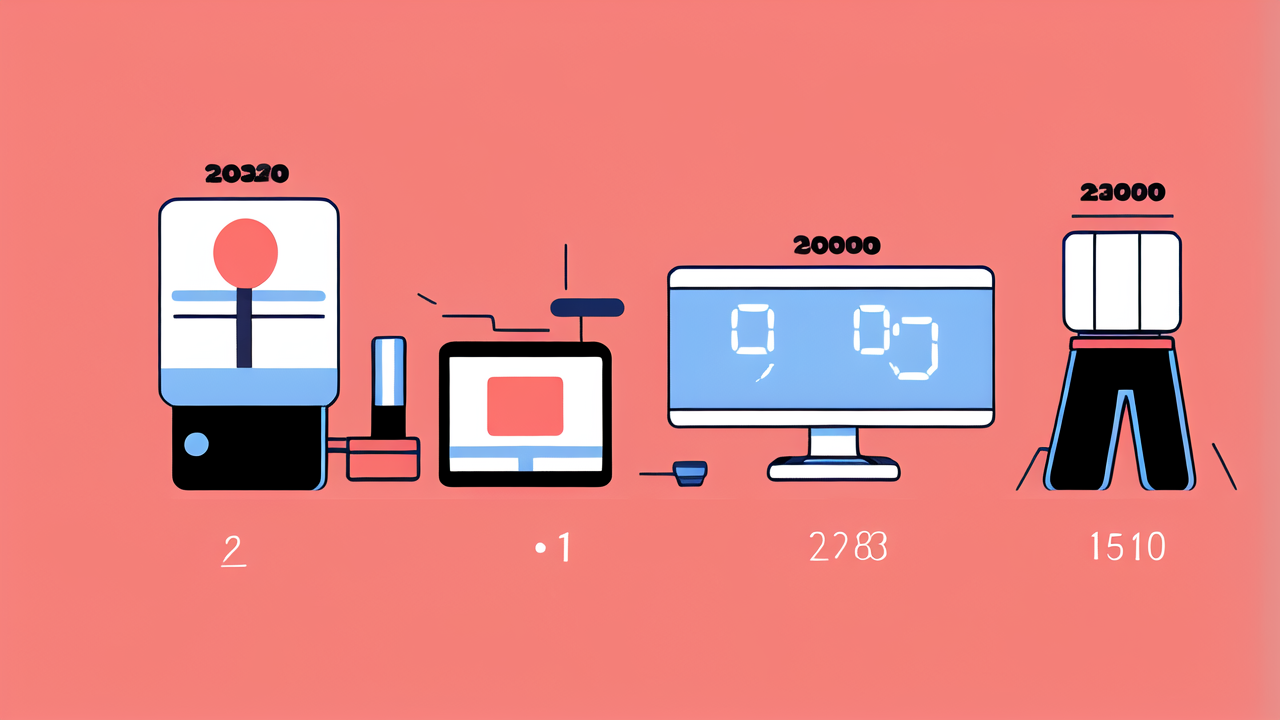The Evolution of Wearable Technology in the United States
The inception of wearable computing devices
Wearable tech began as a sci-fi dream. It became real in the 1960s with the first wearable computer. Early devices were bulky and impractical. They were mainly for military use. In the 1980s, consumer wearables emerged. These included calculator watches and hearing aids. The 1990s saw the rise of wearable medical devices. Fitness trackers came next in the early 2000s. They were simple step counters at first. Over time, they grew more advanced. Today's wearables are sleek and powerful. They can track various health metrics and more.

Milestones in smart watch and clothing development
Smart watches evolved rapidly. The first modern smart watch came out in 2012. It could run apps and connect to phones. In 2014, major tech companies entered the market. This led to better designs and features. Smart clothing followed a similar path. Early smart clothes were stiff and uncomfortable. They had limited functions. Recent years have seen big improvements. New fabrics can sense body data. They're more comfortable and washable. Some can even charge themselves. Key milestones include heart rate monitoring shirts and posture-correcting clothes.
Current state of the wearable tech market
The wearable tech market is booming. Smart watches lead the way. They're popular for fitness and health tracking. Fitness bands are also common. Smart clothing is growing fast. It's still a niche market, but gaining ground. The focus is on sports and health care. Many devices now offer advanced health features. These include ECG and blood oxygen monitoring. The market is competitive and innovative. New products launch often. Prices are falling as tech improves. This makes wearables more accessible to consumers.
Health and Wellness Trends Driving the Smart Clothing Industry
The rise of the health-conscious consumer
People care more about health than ever. This trend boosts the smart clothing industry. Consumers want to track their fitness and wellness. They seek data on sleep, stress, and activity levels. Smart clothes offer this info easily. They can monitor vital signs all day. This appeals to health-conscious buyers. The COVID-19 pandemic increased health awareness. It made people more interested in personal health data. Smart clothing meets this need well. It provides ongoing health insights without effort.

Wearable devices and their role in personal health tracking
Wearables have changed how we track health. They offer real-time data on various metrics. These include heart rate, sleep patterns, and calorie burn. Some can detect falls or irregular heartbeats. This data helps users make informed health choices. It can alert them to potential issues early. Doctors can use this data too. It helps them monitor patients remotely. This is especially useful for chronic conditions. Wearables motivate users to be more active. They set goals and track progress easily. This leads to healthier lifestyles overall.
The intersection of fashion and fitness
Smart clothing blends tech with style. It's not just about function anymore. Designers are creating attractive smart clothes. They look good and perform well. This appeals to fashion-conscious consumers. Smart fabrics can change color or pattern. Some react to body heat or movement. This adds a fun, interactive element to fashion. Sports brands are leading this trend. They offer stylish smart workout gear. Even luxury brands are entering the market. They're creating high-end smart accessories. This fusion of fashion and tech is driving market growth.
Future Prospects for Smart Clothing in the Fitness Sector
Innovations on the horizon for wearable technology
The future of smart clothing is exciting. New materials are in development. These can stretch, self-repair, and conduct electricity. They'll make smart clothes more durable and functional. Sensors are getting smaller and more powerful. This will allow for more discrete, comfortable wearables. Energy harvesting tech is advancing. Future smart clothes might power themselves. They could use body heat or movement. Augmented reality integration is another possibility. Smart glasses could display fitness data in real-time. These innovations will make smart clothing more useful and appealing.

The potential impact of AI and Machine Learning
AI and ML will transform smart clothing. They'll make devices smarter and more personalized. AI can analyze health data to spot patterns. It could predict health issues before they occur. ML algorithms can tailor fitness advice to each user. They'll learn from your habits and preferences. This will make smart clothes more like personal health assistants. AI could also improve the accuracy of health tracking. It might detect subtle changes in vital signs. This could lead to earlier disease detection. The combination of AI and smart clothing has huge potential for health care.
Regulatory challenges and considerations for health data
As smart clothing collects more health data, regulations become crucial. Privacy is a major concern. Laws like HIPAA protect health info in the US. But wearable tech often falls into a gray area. There's debate over how to classify and regulate these devices. Some smart clothes might need FDA approval. This depends on their health claims and functions. Data security is another challenge. Smart clothes must protect user info from hackers. There's also the question of data ownership. Who owns the health data collected by smart clothes? These issues need solving for the industry to grow safely and ethically.




Leave a comment
This site is protected by hCaptcha and the hCaptcha Privacy Policy and Terms of Service apply.